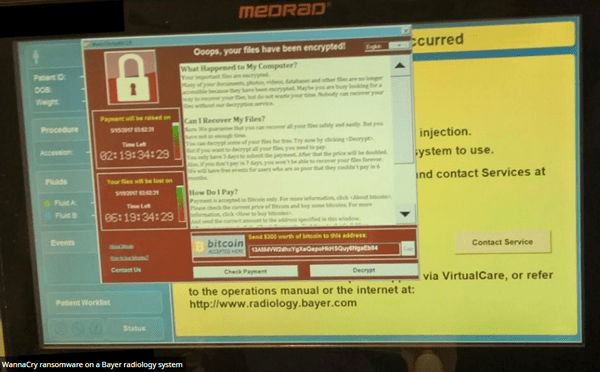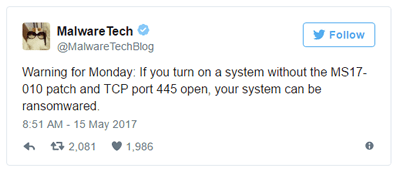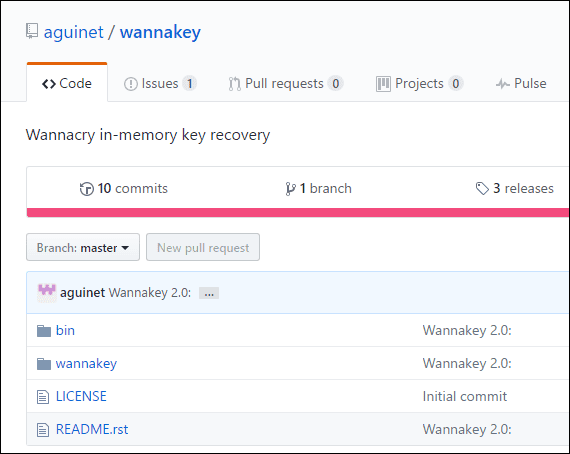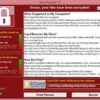The WannaCry ransomware continues to spread across the globe. Already it has affected thousands of computers not only in the private sector but in the business sector as well. It has already done a lot of damage yet it persists on threatening people and asking for around $300 in ransom fees.
In fact, many phone lines and even hospitals were affected. Most recently, Forbes reported that not only computers were affected but medical devices in US hospitals too. An image of a corrupted Bayer Medrad device was released, evidencing just how dangerous this malware is. A Bayer Medrad, by the way, is a radiology equipment designed to assist doctors with better internal imaging.

Although it wasn’t clear which model or from which US hospital this infected device came from, one thing is clear – the WannaCry ransomware has become a massive threat.
How to Protect Yourself from WannaCry
There are security measures that you can implement to prevent your computers from being compromised by the ransomware. Here are the main things you should do right away:
Update Your Windows Now
First of all, check what Windows OS version your computer is running. The WannaCry ransomware mainly works by exploiting vulnerabilities in older versions, namely Windows 8, Windows XP, and Windows 2003.
If your OS is any of these, update right away to any of the following Windows OS versions: Windows 10, 8.1, 7, and Vista. At the moment, they are not vulnerable to the ransomware. The same goes for Windows Server 2008, 2008 R2, 2012, 2012 R2, and 2016. If your OS is one of the most recent iterations, it is advisable to check for security updates. Keep your system up to date to be safe.
Needless to say, since this ransomware targets Windows users, anyone with MacOS, Linux, or ChromeOS systems shouldn’t worry too much about WannaCry. Though, you still need to be on the look out for other types of ransomware.
Block TCP Port 445
A good advice to follow is blocking the TCP port 445. This word of wisdom comes from the security analyst who temporarily stopped the worldwide malware attack, so it is worth listening to. The advice was given to the public in the form of a tweet:

Aside from blocking that port, it is also a safe approach to download the MS17 010 patch right away.
Turn On Windows Update
Some people choose to turn off the automatic Windows update feature upon installing the OS simply because they don’t want to be bothered. Now that there is a big threat out there, it is best to activate Windows Update and leave it on. This way, whenever the latest security patches become available, they will be automatically installed. That’s something less for you to worry about.
Simply head over to the Control Panel menu. You can type this on Cortana for quick access. Once there, turn on automatic updates.
Install or Upgrade to a Stronger Anti-Virus Program and Ransomware Blocker
Malware attacks are malicious computer programs, so it only makes sense that you can install defensive programs as well. Yes, Windows has its Defender, but better safe than sorry. So, make sure you have a strong and effective anti-virus software installed and running on your computer. Better yet, get one that is designed especially to combat ransomware. Cybereason Ransomfree and similar products are worth looking into.
If you are unsure if you have a ransomware blocker or anti-virus program, check by going to Control Panel again. Then, go to Programs and review the list of software you have installed. If you find no anti-virus, install one immediately.
Back Up Your Important Files
Just in case your computer is affected by WannaCry, or any ransomware for that matter, it won’t be so painful if you have backups. Therefore, have a copy of those files you can’t bear to lose. Save them on a separate computer, in a hard driver, or in the cloud. It is best to protect your backups with strong passwords as well. When you do receive that dreaded ransom threat, you won’t feel so affected if you know you have your backups safe and sound.
What to Do if You Have Been Affected by WannaCry?
I’m seeing the WannaCry ransom letter on my screen. What to do?!
First of all, don’t panic.
Rest Easy with Your Backups
If you have backups, take a deep breath and relax. You can simply restore your computer to a previously uninfected state. You don’t have to worry about losing important data since you’ve got a copy of them. It’s a little bit troublesome, yes, but not a major headache.
Use Decryptor Tools
But what if I don’t have backups?
Again, take a deep and calming breath. Then, make sure you don’t reboot your computer. You can then take advantage of decryptors released recently. Ever since WannaCry hit massive status, tech researchers have been hard at work, looking for a solution.
French security researcher, Adrien Guinet, has found a good method to foil the ransomware’s nefarious threats. He released the WannaKey tool, which can help affected individuals recover their ransomed files. This only works on Windows XP computers though that have not been rebooted yet after the attack. Or those devices with unallocated associated memory.

If your computer isn’t running on Windows XP, don’t worry. Another helpful researcher named Benjamin Delpy developed the tool, WannaKiwi. This works with Windows 7, XP, Vista, Server 2008, and Server 2003. This will help you unlock your files so you don’t have to pay a single cent to the hackers behind WannaCry.
You can download the decryptor tools here. Be sure to read the programs’ descriptions first.
Here is also a video showing how to use the tools.
Conclusion
WannaCry has infected thousands of computers across the world. It has caused a lot of frustration among many, halted businesses, and even endangered hospital patients’ lives. So, make sure your system is protected by following the tips above.
If the ransomware has affected your computer, try the decryptor tools right away. Thanks to smart tech researchers, we are not entirely helpless against WannaCry now. Call a computer technician for assistance as well if you wish to leave the decryption of your files in the hands of experts.
Overall, there are various things you can do to solve this problem and others like it that might crop up in the future. The one thing you should not do is pay the hackers. Simply keep your computer safe and be religious about backing up important files!


